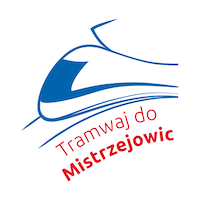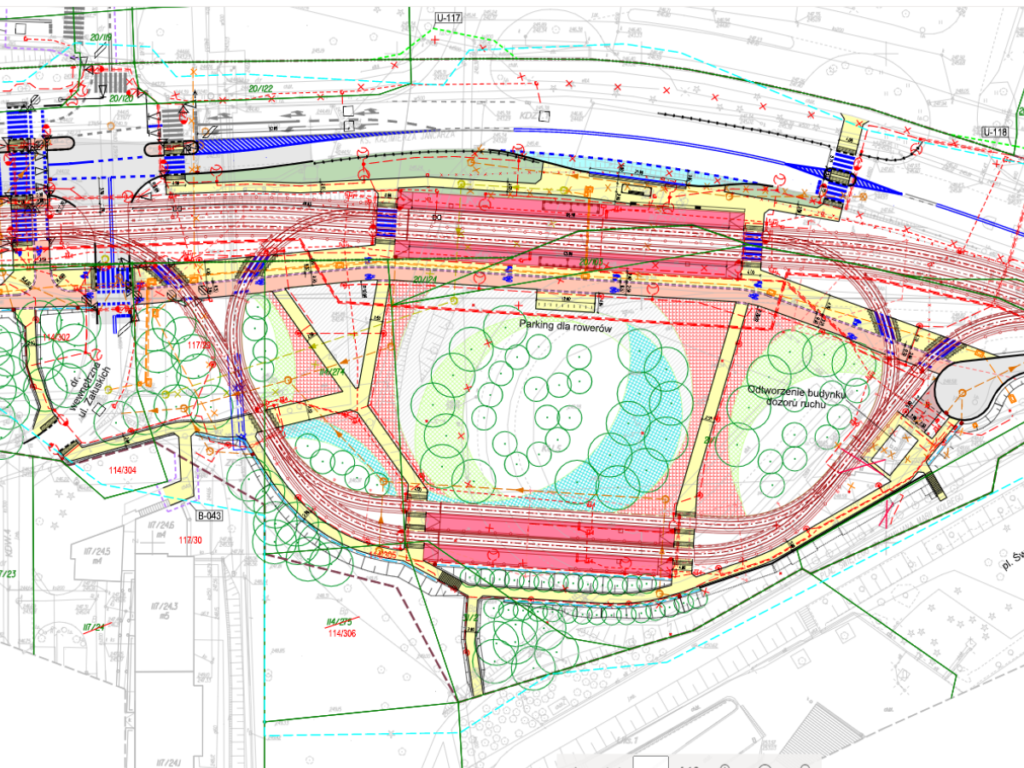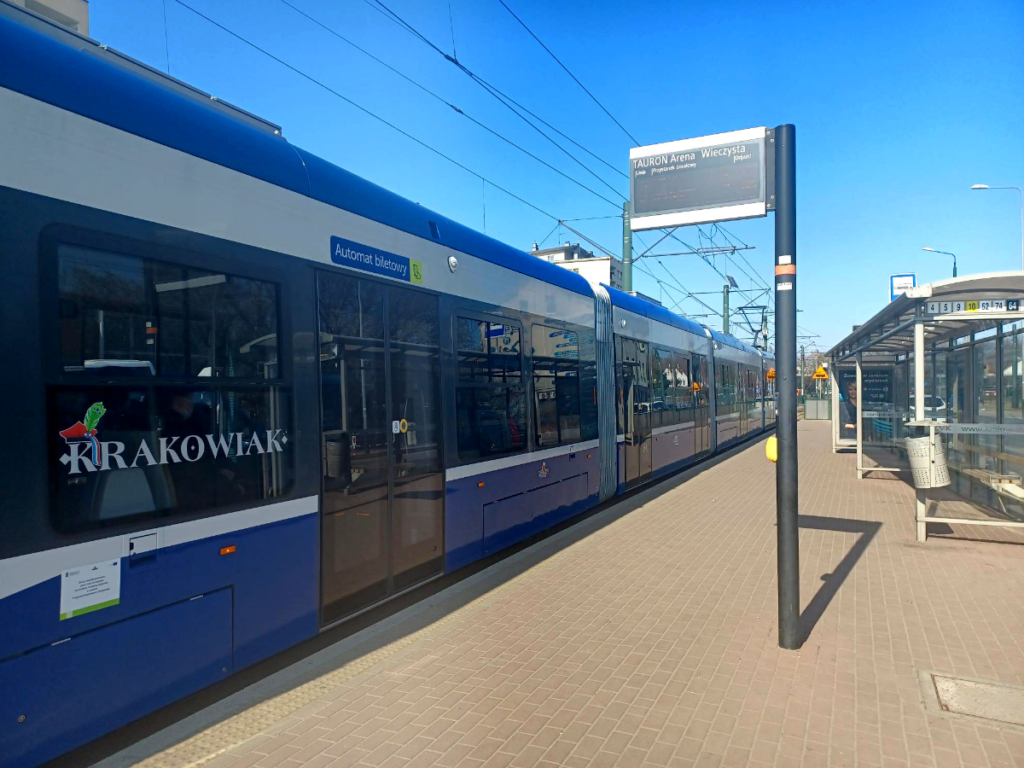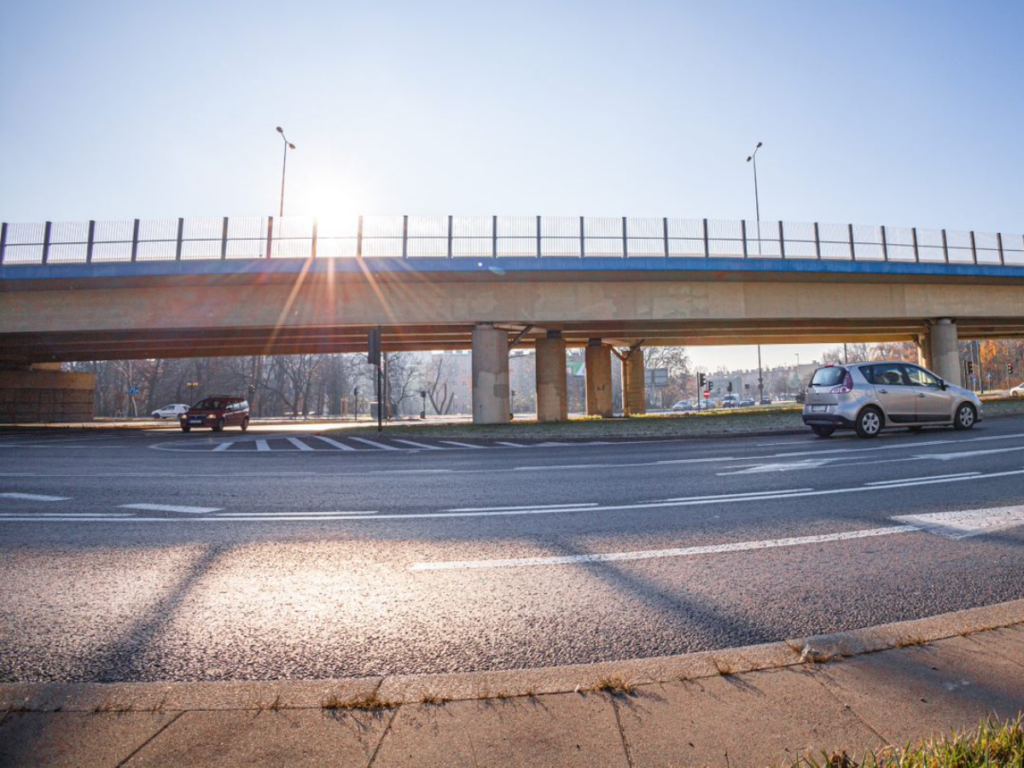Convenient access to housing estates, quite a lot of greenery, new lighting – this will be the new look of the Mistrzejowice terminus.
The tram terminus in Jancarza Street, constructed in the 70s, is going to undergo an extensive reconstruction. The terminus, opened on 29 November 1974, made quick carriage of passengers between Hipokratesa roundabout and Mistrzejowice possible. In 2024, also the route in a westerly direction will start here as part of KST IV project.
Mistrzejowice terminus tailored to the 21st century
The whole area will be newly developed: lush vegetation, new LED lighting, bicycle parking and convenient footways adjusted to the needs of people with disabilities will be provided. Residents of neighboring estates will benefit most from this reconstruction. Transfer to buses operating from a neighboring bus terminal will be much easier – the existing crosswalk will be moved westwards, thanks to which the distance will be shorter. Four comfortable tram platforms will be 65 meters long, which means that they will be significantly longer than the present ones, thanks to which passenger ingress and egress will be safer. At each of them, there will be waiting shelters with modern passenger information boards next to them. A new traffic control point will be constructed which will serve also as tram drivers’ facilities. The area between Jancarza, Załuskich and Kolbego Streets will be tailored to the 21st century.
Facilities for all traffic participants
A new dedicated bike path will be constructed on the southern side of Jancarza Street, reaching the terminus. It will be connected to the existing shared zone on the eastern side of the terminus. In order to meet the expectations of the residents, an additional lane was designed for turning right from Jancarza Street into Załuskich Street. This will be of benefit not only to those using public transport, but also to drivers and cyclists.
Since the new infrastructure is to be created at the location of an operating tram terminus, the matter of keeping the tram traffic during the construction works has to be solved. – The operation of the terminus will be undisturbed for most of the duration of the construction works. The traffic will be suspended temporarily for the planned integration of the new infrastructure, during which passengers will use replacement transport service. Those changes are scheduled for 2024 and will last no longer than a few months – says Wojciech Janosz, site manager from Gülermak – the company implementing the project.




